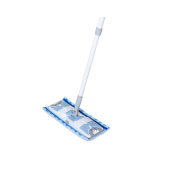Choose what you want and swipe your credit card—everyone knows how. That easy, right? Business is more complicated. You must understand the business need for a good or service, fill out forms to submit internally and to vendors, receive layers of approvals from stakeholders at your company, and consider contract details before paying. The bottom line of your business is significantly affected by these acts. Understanding and optimising the purchasing process is essential for organisations looking to increase efficiency, lower costs, and streamline procurement operations.
What You Learn
- Purchase procedure phases.
- Purchasing vs. procurement.
- How to tackle common problems.
- Purchasing optimization best practices.
What is the Purchase Process?
The procurement process involves an organization’s identification, selection, and acquisition of goods and services. It begins with a need and concludes with invoice payment and reconciliation. This method guarantees firms can meet operational needs efficiently and cost-effectively.
Purchase Process: 9 steps
Businesses must properly navigate the purchase process to buy goods and services quickly and cheaply. This procedure includes determining the need for a product or service, paying the vendor, and updating accounting records. Understanding each phase may streamline purchases, save costs, and improve operational efficiency. Let’s examine the nine crucial buying steps.
1. Define Need
The purchase process begins when an organization needs commodities, tools, or services. This first step involves assessing what is needed, how much, and when. Businesses must precisely describe their demands to avoid over- or under-purchasing and optimize resource allocation.
2. Make a Purchasing Request
After defining the need, send a buy requisition to the procurement department or purchasing manager. This document should list the items or services, quantity, specifications, and delivery time. A formal purchase requisition starts the purchasing process.
3. Purchase Order Review/Approval
A PO is generated after the purchase request is approved. This document formalizes the purchase of products or services from a seller, including types, quantities, and prices. Before proceeding, the procurement team must verify that the PO matches the approved purchase demand.
4. Proposal/Quotation Request
The procurement department may send vendors an RFP or RFQ after an approved purchase order.
These documents help the company assess prices, terms, and quality before picking a provider.
5. Complete Contracts
After selecting an RFP/RFQ bidder, negotiate and sign a contract. This binding contract covers cost, delivery, and more. Before trading goods or services, both parties must sign the contract.
6. Evaluating the Vendor
After delivery, compare the vendor’s performance with the contract. Identify any issues and note them for future purchases.
7. Three-way Matching
Three-way matching checks that the purchase order, delivery receipt, and vendor invoice all match.
Payment mistakes and fraud are prevented by verifying that only goods and services received and agreed upon are paid for.
8. Approve and Pay Invoice
The invoice can be paid after three-way matching the purchase order and delivery receipt. Prompt payment maintains vendor connections and may qualify the business for discounts or better terms.
9. Report Accounting Changes
Accounting record updating concludes the purchasing procedure. This includes recording purchase details, payment information, and any necessary modifications to reflect the transaction. Budgeting and financial planning require precise and current financial records.
Purchase vs. procurement
Businesspeople commonly use ‘purchasing’ and ‘procurement’ interchangeably. They relate to separate processes with different goals and actions.
The purchase process is a subset of procurement that focuses on the transactional phase—the operational aspects of getting what the organization needs.
In comparison, procurement involves much more than purchasing. Although there is overlap, procurement includes:
- Finding an organization’s overall needs
- Evaluation and selection of vendors, sometimes using long-term criteria
- Contract negotiations
- Managing supplier connections
- Strategic sourcing
- Following company and external regulations
- Always looking for ways to save costs and boost efficiency
Strategic procurement involves long-term planning and relationship-building to get the most value for the organization, while the purchasing process involves real transaction flow to determine how to buy products and services.
Common purchasing issues
Businesses of any size may ensure a smooth purchasing process, but there are several obstacles that, if not addressed, can expand with the firm.
Over Reliance on manual systems causes several purchasing problems. Manual operations—paper orders, spreadsheet monitoring, hand-signed approvals, etc.—can quickly become a bottleneck for growing organizations. Manual systems impede the purchasing cycle, increase errors and inefficiencies, and hinder scaling.
Other concerns:
Human Error
Human error is inevitable in manual buying. Business expansion increases transaction complexity and volume, raising error risk.
Automated digital systems can prevent data input errors and other ignored details by catching irregularities before they become a problem.
Delays in approval and workflow
Approval and workflow delays are prevalent with manual purchase. Without efficient communication and collaboration tools, teams can miss deadlines and postpone projects.
Automated workflows ensure everyone knows their duties and timetables and speed up approvals, keeping operations on schedule.
Isolated Teams
When teams or divisions within an organization operate separately, it can cause miscommunication and missed opportunities, especially in purchasing.
A digital system with a single platform lets stakeholders communicate, share information, and work together more effectively.
Overall inefficiency
Unstandardized purchasing is inefficient, to say the least. From demand to payment, visibility is difficult without automation. Lost cost-saving opportunities and economies of scale can result from this oversight.
Best purchase processes
Purchasing methods affect companies’ finances and efficiency. Best practices in purchasing save money and strengthen supplier relations.
Accept automation
Making purchases automated is revolutionary.
Digitizing boring tasks frees up personnel to do more strategic, value-added work. The purchase cycle is faster and data entry and processing errors are reduced.
Disjointed teams
Another problem is when departments or teams operate in isolation from one another. This strategy fragmentation can lead to misunderstandings and lost opportunities for collaboration, particularly in the purchasing department.
A digital system’s unified platform simplifies stakeholder engagement, information sharing, and teamwork.
Standardize procurement
Standardizing procurement is another recommended best practice.
Businesses can expedite processes, eliminate employee misunderstanding, and comply with internal and external requirements by adopting clear, consistent purchasing procedures and criteria.
Standardization makes operations easy to comprehend and follow, and management can monitor compliance and performance, improving purchase efficiency.
When procurement and purchase are ‘hard’, employees are less inclined to follow rules!
Track and analyze purchases
In the 21st century, data is crucial to purchase optimization.
Tracking and analysing purchasing data helps organizations understand their spending trends, find cost reductions, and make better vendor and contract selections.
Why purchasing process investment matters
The efficiency and efficacy of your purchasing process can greatly affect your bottom line.
Modernizing your purchasing process with standardization, automation, and strategic planning can revolutionize operations:
Reduce costs
Cost reductions are a major incentive to improve your purchase process.
Standardized, automated purchasing reduces the danger of overbuying or investing in needless goods and services. It helps companies examine spending patterns, negotiate better supplier arrangements, and make sure every purchase is justified and valuable.
Minimizing needless spending helps firms organize resources and improve finances.
Process buying more efficiently
Modern purchasing streamlines the requisition-to-payment process by eliminating bottlenecks. Approval chain automation speeds decision-making, lowers paperwork, and decreases errors and miscommunications.
This simplified method speeds up the purchasing cycle and boosts team productivity by letting them focus on strategic activities rather than administrative tasks.
Improve vendor relations
Clear, standardized purchasing paperwork and processes enable transparent, successful vendor engagement. Clear communication and teamwork develop confidence and deepen supplier relationships, which can improve cost, quality, and terms.
Strong vendor connections ensure a stable and trustworthy supply chain, critical to your business’s success.
Lower procurement management risk
Well-structured purchasing decreases procurement management risks. Approval protocols and spending limitations help firms prevent wasteful purchases and uncompetitive pricing.
Automation reduces human mistake and ensures company and industry compliance. This proactive risk management protects the organization from financial and operational issues.
Easily expand over time
Modernized purchasing processes are scalable to grow with your organization.
Your purchasing needs will get more complex as your company grows. An automated and flexible system may simply incorporate approval levels, spending categories, and cross-functional collaboration without major reorganization.
Scalability is essential for firms that want to grow without obsolete or inflexible methods.
Coordinating the purchase process
Efficiency, cooperation, and strategic procurement management are all improved with procurement orchestration, which is especially useful for growing businesses.
In advanced procurement orchestration, a purchase requisition is created by consolidating purchase intake requests and incorporating cross-functional approvals. With everyone involved right from the beginning, the procurement process runs smoothly.
Beneficial aspects of procurement orchestration include the cooperation layer.
Increasing stakeholder adoption is as simple as keeping stakeholders informed and involved all the way through the buying process.
Business intake and approvals can be expedited through procurement orchestration’s many crucial approaches.
- Automated Workflows and Processes: To avoid manual tasks and errors, procurement orchestration uses automated workflows and processes. Automating workflow streamlines request-to-approval processing, saving time.
- Process Reporting and Analytics: Procurement orchestration provides detailed reporting and analytics on the procurement process.
Businesses now orchestrate procurement instead of buying.
Centralized intake requests, coordinating cross-functional approvals, and automating procurement orchestration increases collaboration, efficiency, and strategy.

















